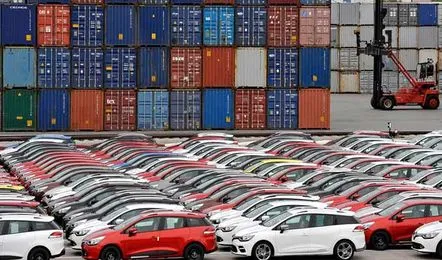
India emerging as leading source of vehicle imports for South Africa
NEW DELHI : India has emerged as the leading source of vehicle imports for the South African automotive industry since 2013, according to the Automotive Business Council’s BRICS+ Research Report 2024, as India’s establishment as a global hub for small and entry-level vehicles, which dominate sales in the domestic market.
Tata and Mahindra have solidified their presence in South Africa. Mahindra executives often refer to South Africa as their “second home” outside India, owing to significant investments, including a production line in Durban. The report highlights that China and India have been among South Africa’s top 10 automotive trading partners since 2010, driven by rising automotive imports.
China has strengthened its position as the second-largest source of vehicle imports since 2022. Financially constrained consumers in South Africa have increasingly opted for more affordable models from China. Additionally, China has been the leading source of aftermarket parts imports since 2018.
“In 2023, the automotive trade balance heavily favoured India with an import-to-export value ratio of 97.7 to 1, China at 56.8 to 1, and Brazil at 2.6 to 1,” the report stated. It emphasised the need for BRICS nations to explore complementarities, share experiences, and promote capacity-building in automotive trade and investment-related issues.
South Africa’s inclusion in BRICS (Brazil, Russia, India, China, and South Africa) has boosted its international stature and trade relations with these major economic forces. After joining BRICS in 2010, South African automotive exports increased to all four partner countries from 2010 to 2011.
However, between 2010 and 2023, automotive exports to India declined. Exports to Brazil, China, and Russia increased but remained negligible compared to South Africa’s total automotive export revenue of Rand 270.8 billion in 2023. The report attributed this “indifferent export performance” to broader market conditions, automotive policy factors, tariff measures, and country profiles not suited to South African premium passenger cars and bakkies.
The report discussed the opportunities arising from the inclusion of five more countries into the BRICS+ bloc from January 2024. “The expansion of the group to BRICS+ from January 1, 2024, including other significant emerging economies, promises to reshape various global industries, including the automotive sector,” it stated.
The integration of new member countries could optimise automotive supply chains within BRICS+. “BRICS attracts a diverse group of potential members because of its primary-driven shared desire to create a more equitable global landscape that many countries believe is currently biased against them,” the report added.
As far as automotive imports are concerned, significant increases from all four countries into South Africa were recorded from 2010 to 2011. Over the period from 2010 to 2023, automotive imports from China, India, and Brazil rose substantially.
The report highlighted that India’s role as a global hub for small vehicles has made it a key player in South Africa’s import market. This trend is expected to continue as both countries strengthen their automotive trade relations within the BRICS framework.
South Africa stands to benefit significantly from the expanded BRICS+ bloc. The inclusion of new member countries is anticipated to enhance trade opportunities and optimise supply chains within the automotive sector.
